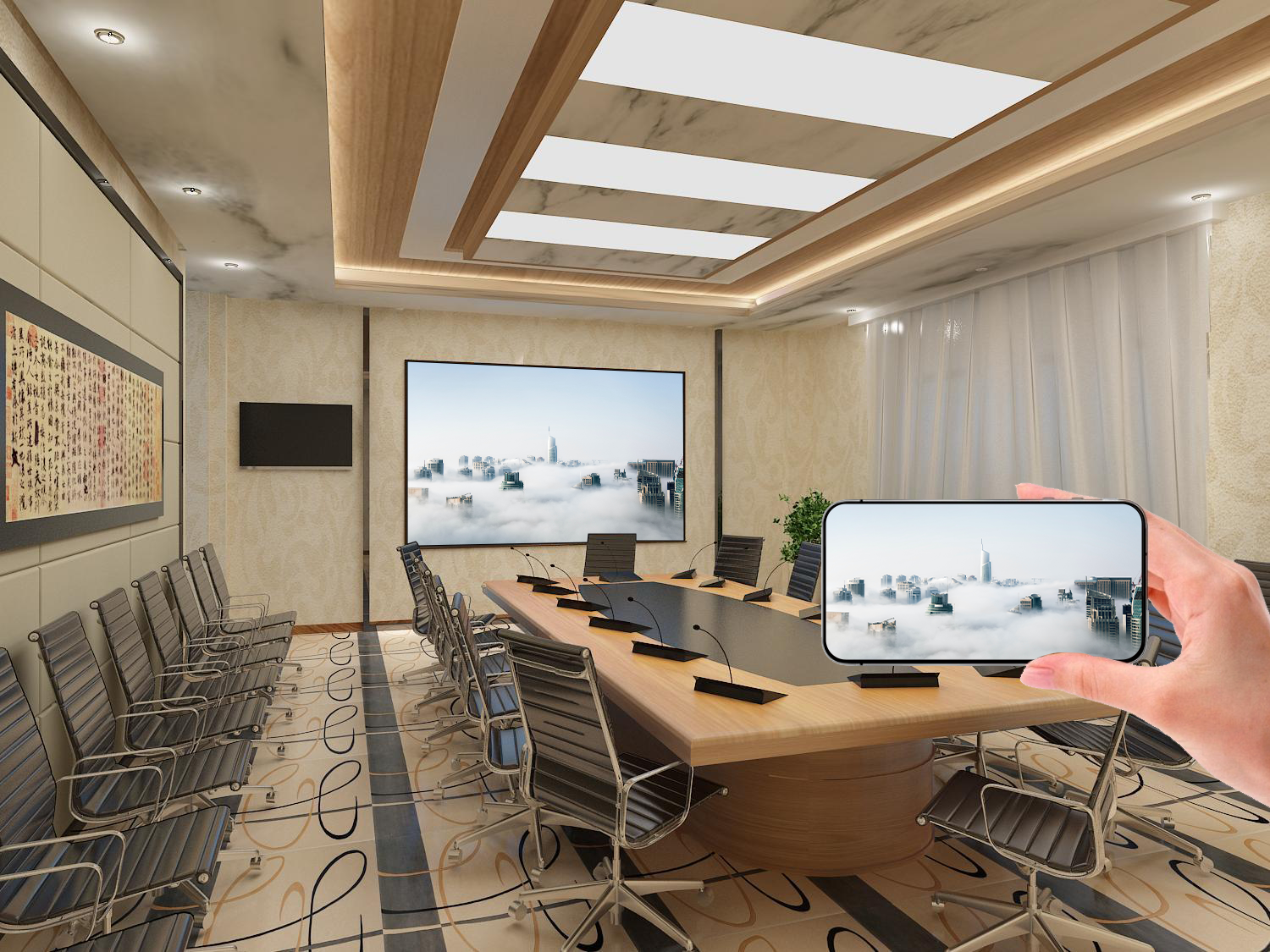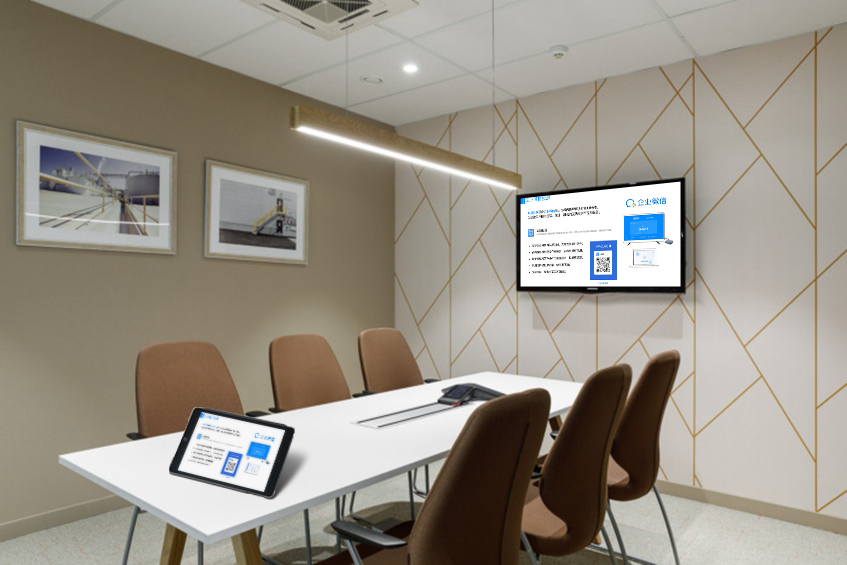AirPlay Solution: A Wireless Screen Mirroring Solution for the Apple Ecosystem
The AirPlay solution is based on Apple’s wireless transmission protocol. Combined with proprietary enhancement technology, it achieves seamless interconnection between Apple devices like iPhones, iPads, and Macs and various large screens. It focuses on solving the pain points of “unstable connections, quality loss, and multi-device conflicts” in Apple ecosystem mirroring, providing a high-definition, smooth wireless mirroring experience for scenarios like office, education, and home entertainment.
Core Technology Advantages
- Deep Adaptation for All Apple Devices: It deeply optimizes the AirPlay protocol link, perfectly supporting all devices in the Apple family: iPhone (iOS 9 and above), iPad (iPadOS 13 and above), and Mac (macOS 10.11 and above), including the latest iPhone 15 and MacBook M3 chip models. Through Bijie’s hardware decoding technology, the mirroring success rate for older Apple devices (e.g., iPhone 7, iPad Air 2) is increased to 99.8%, avoiding common problems in traditional solutions such as search delays and connection interruptions.
- High-Definition, Lossless Transmission: It breaks through the standard AirPlay transmission limitations, supporting the synchronized transmission of 4K Ultra HD quality and Dolby audio. The video frame rate is stable at 60fps, and transmission latency is controlled within 40ms. It uses dynamic bitrate adjustment technology to automatically optimize transmission parameters during network fluctuations, ensuring that when a MacBook demonstrates a Keynote animation or an iPhone plays a 4K video, the screen is smooth and the colors are accurate, meeting professional-grade presentation needs.
- Multi-Device Concurrent Management: It supports up to 16 Apple devices connecting simultaneously and queuing to mirror. Through Bijie’s intelligent scheduling algorithm, it avoids signal conflicts caused by devices competing for bandwidth. A MacBook and an iPhone can display different content in a split-screen view. The screen transitions are seamless during switching, with a response time of <1 second, solving the problem of traditional AirPlay’s multi-device mutual exclusion.
Key Function Design
- Cross-Scenario Mirroring Modes: It provides both “mirroring” and “content push” modes. The mirroring mode synchronizes the entire screen content of the device, which is suitable for demonstrating app operations and document editing. The push mode only transmits the video/audio stream, allowing the device to run other tasks in the background. When a MacBook is mirroring a movie, the screen can be turned off to save power, increasing operational flexibility by 60%.
- Two-Way Control Interaction: It supports a large screen’s reverse control of Apple devices. On a conference touch screen, you can directly swipe to turn pages of a PDF document on an iPad or zoom in on a design blueprint on a MacBook. The operational commands are sent back through an encrypted channel in real time, with a latency of ≤30ms, freeing you from the constraint of “looking down to operate the small screen.”
- Content Permission Control: An integrated AirPlay mirroring whitelist function allows only authorized Apple devices to discover the mirroring terminal. A “content review” can be enabled for sensitive scenarios, where the content must be confirmed by an administrator before it is displayed, preventing irrelevant content from being shown. It supports hiding the device name, so it can only be connected by a custom mirroring code, ensuring the security of meetings and teaching.

Scenario-Based Implementation Solutions
(I) Business Office Scenarios
- High-End Presentations: A designer can use a MacBook to mirror a 3D design model to a 4K conference screen via a Bijie AirPlay terminal. It supports touch-enabled rotation on the large screen to view details. A client can use an iPhone to film revision suggestions and mirror them with annotations. The content from both is compared in a split-screen view, increasing the efficiency of solution communication by 50%. When paired with the Bijie conference system, AirPlay-mirrored content can be linked to the meeting minutes, and key screens can be automatically captured and archived.
- Mobile Negotiations: In a client’s office, a salesperson can use an iPhone to quickly mirror a product promotional video to a Bijie portable projector, and then use an iPad to mirror a quotation. Midway through, they can switch to a MacBook to demonstrate data analysis. The multi-device switching is smooth without interruption, significantly increasing the professionalism of the business presentation.
(II) Education and Teaching Scenarios
- Apple Classroom Interaction: A teacher can use an iPad to mirror courseware to a smart blackboard via AirPlay. When they annotate key points with an Apple Pencil, the large screen simultaneously displays the writing trajectory. Students can film an experimental process with an iPhone and push it to the teacher’s terminal. The whole class can view the details on the large screen, and the teacher can annotate the key operational points in real time with a stylus, increasing classroom interactivity by 70%.
- Creative Course Teaching: In an art and design class, a student can use a MacBook to mirror a design sketch to the classroom’s large screen. The teacher can remotely retrieve it with an iPad and add revision suggestions. All operations are synchronized in real time. When the works of multiple groups are displayed in a split-screen view, the system automatically categorizes them by creative theme, making it easy to compare and comment, increasing the efficiency of creative teaching by 40%.
(III) Home Entertainment Scenarios
- Immersive Audio-Visual Experience: An iPhone can mirror a 4K movie to a home theater via a Bijie AirPlay terminal, which automatically links to the speakers to output Dolby Atmos sound. The phone can be used as a remote to adjust the progress. A MacBook can push lossless music to speakers throughout the house, while an iPad mirrors the lyrics, allowing the family to sing along, providing an entertainment experience comparable to a professional cinema.
- Family Sharing Moments: During a family gathering, all Apple devices automatically form an AirPlay sharing group after connecting. Photos taken with an iPhone are mirrored to the TV in real time for a slideshow, and you can use gestures to zoom in and view them. An iPad can mirror a travel vlog, and others can send barrage comments from their iPhones, making the family atmosphere more lively.
Management and Assurance System
- Exclusive Management for Apple Devices: Administrators can use the Bijie Cloud Platform to view the mirroring records of Apple devices (including device model, mirroring duration, and content type). It supports authorizing devices by group, such as restricting students’ iPhones from mirroring only during specified times, avoiding classroom distractions.
- Secure Encrypted Transmission: It uses Apple’s private encryption protocol and Bijie’s secondary encryption technology to ensure that AirPlay-mirrored content is not intercepted or tampered with. It supports integration with enterprise MDM systems, allowing only Apple devices under enterprise management to mirror, protecting the security of business data and teaching content.
- Zero Maintenance Support: The terminal has a built-in automatic Apple protocol adaptation function, so there is no need for manual debugging after a system update. It supports online firmware upgrades to continuously optimize compatibility with new models. The average time between failures (MTBF) is 60,000 hours, making it easy for both home users and enterprise IT to manage.
The core value of the AirPlay solution is to upgrade wireless screen mirroring in the Apple ecosystem from a “basic function” to a “professional tool.” Through deep protocol optimization, scenario-based function customization, and the construction of a security system, it provides Apple users with a mirroring experience of “connect and mirror, HD and lossless, and multi-device collaboration,” redefining the standards of efficiency and reliability for wireless interconnection in the Apple ecosystem.